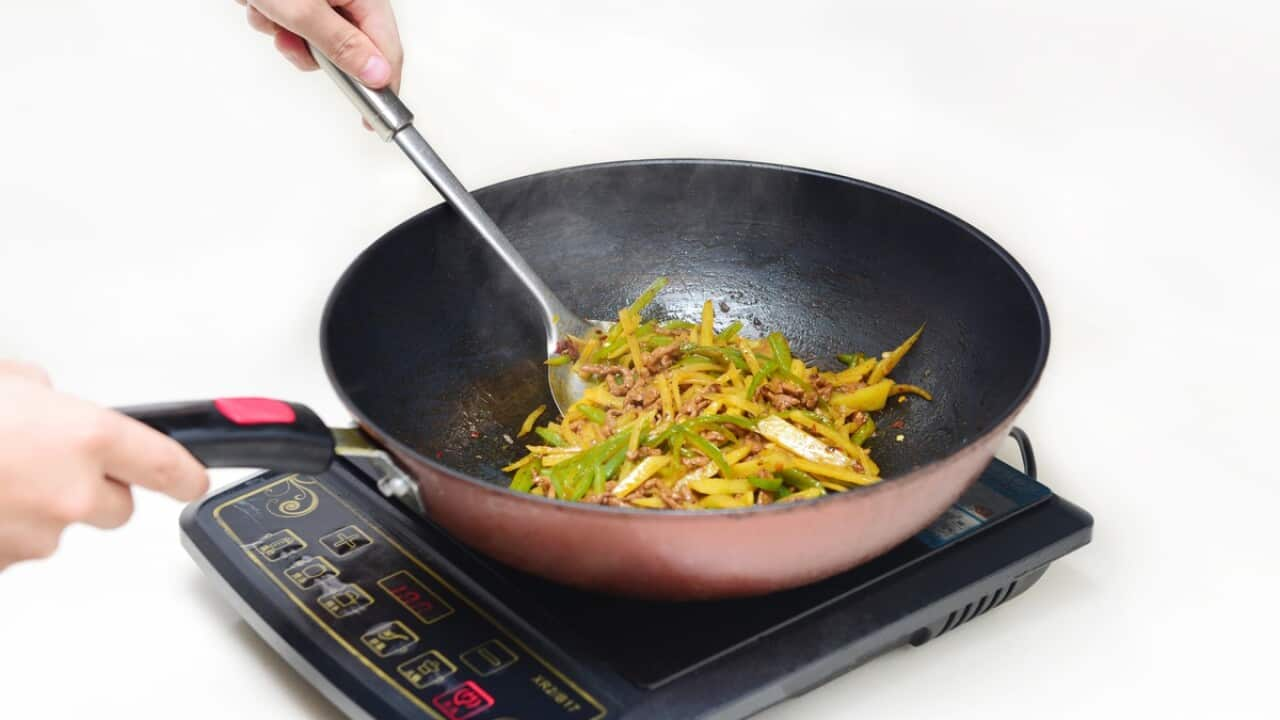--- 's fourth season airs weeknights on SBS Food (Ch.33) at 7.00pm. All episodes available anytime on . ---
When you picture a wok, it may be one that's being worked in mid-air with flames licking its sides. Inside, there's smoky char kway teow or glistening fried rice.
A wok is synonymous with fire. There's even a term for this: wok hei, which translates to the breath of a wok. But how do you make such fiery food if you're using an induction stove? Well, we need to understand the fundamentals of wok hei first. Adam Liaw, the host of SBS Food's The Cook Up, explains that wok hei is all about keeping a high heat.
Adam Liaw, the host of SBS Food's The Cook Up, explains that wok hei is all about keeping a high heat.

Cooking with a wok involves a certain level of technique. Source: Yun Huang Yong/Flickr Creative Commons
"You've just got to remember that your area for high heat is going to be where the induction top is," says Liaw.
Use a chuan
Because the heat is strongest in the centre of your wok, you'll want to use what Liaw refers to as an "immobile" one, which is basically a wok that has handles on either side and doesn't need to be lifted and shaken.
You've just got to remember that your area for high heat is going to be where the induction top is.
This is where technique comes into play. Use a wok spatula or ladle, aka a chuan (a thin-lipped, curved spatula that can mould to the walls of the wok), and use it to toss your ingredients. Avoid overcrowding your wok to ensure the food browns evenly. Try a sauteuse pan
Try a sauteuse pan

A sauteuse pan has a flat bottom but high curved sides for a hot bottom and curvy toss-able sides. Source: Jono Fleming
If your preferred technique is to flick those wrists and work a wok manually, then a might be ideal. The deep-walled pan has a nice, flat surface for your cooktop, and its sloped sides mean your food can move around with ease and not clump together.
Keep in mind that the pan won't be hot enough if you lift it to toss your ingredients; you can only lift it briefly to toss them.
WOK TIPS

How to seal and maintain a wok
Other pans and cookers
A frying pan has a wider, flatter surface, and this provides more heat coverage. It's also Liaw's preference to make fried rice.
Melbourne-based chef Esca Khoo recommends non-stick frying pans. "A wok is rounded so that it can be tossed easily and quickly, keeping the food moving without being scorched by intense heat. [Instead], use a non-stick pan and heat it till [it's at] smoking point," he says. "Ensure all your ingredients are ready to be cooked instantly and keep the pan moving." You can also try a . This is portable and it curves inwards so that your wok can fit snugly in the middle and heat up evenly on all sides.
You can also try a . This is portable and it curves inwards so that your wok can fit snugly in the middle and heat up evenly on all sides.

Dan Hong's crispy char kway teow fried rice Source: SBS Food
The wok is your oyster.
RECIPES MADE IN A WOK

Wok-tossed beef with edible flowers







